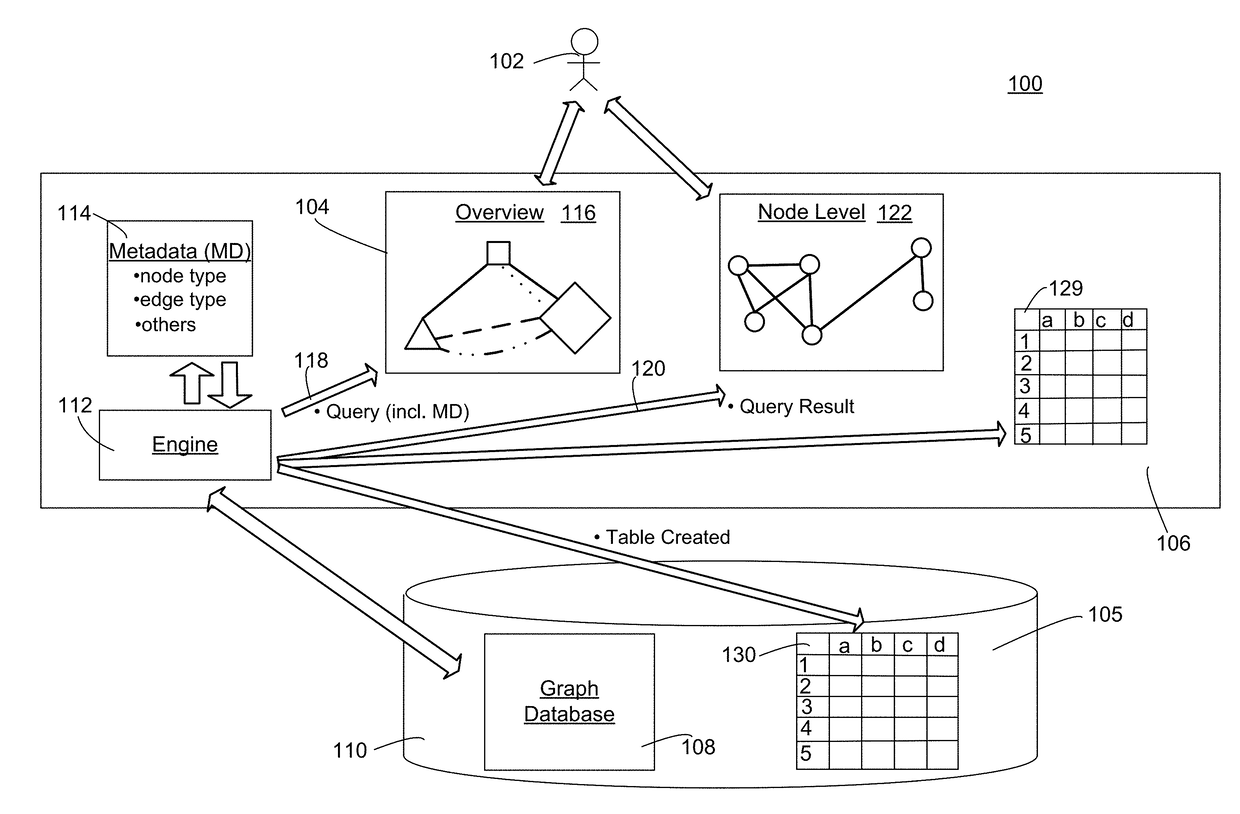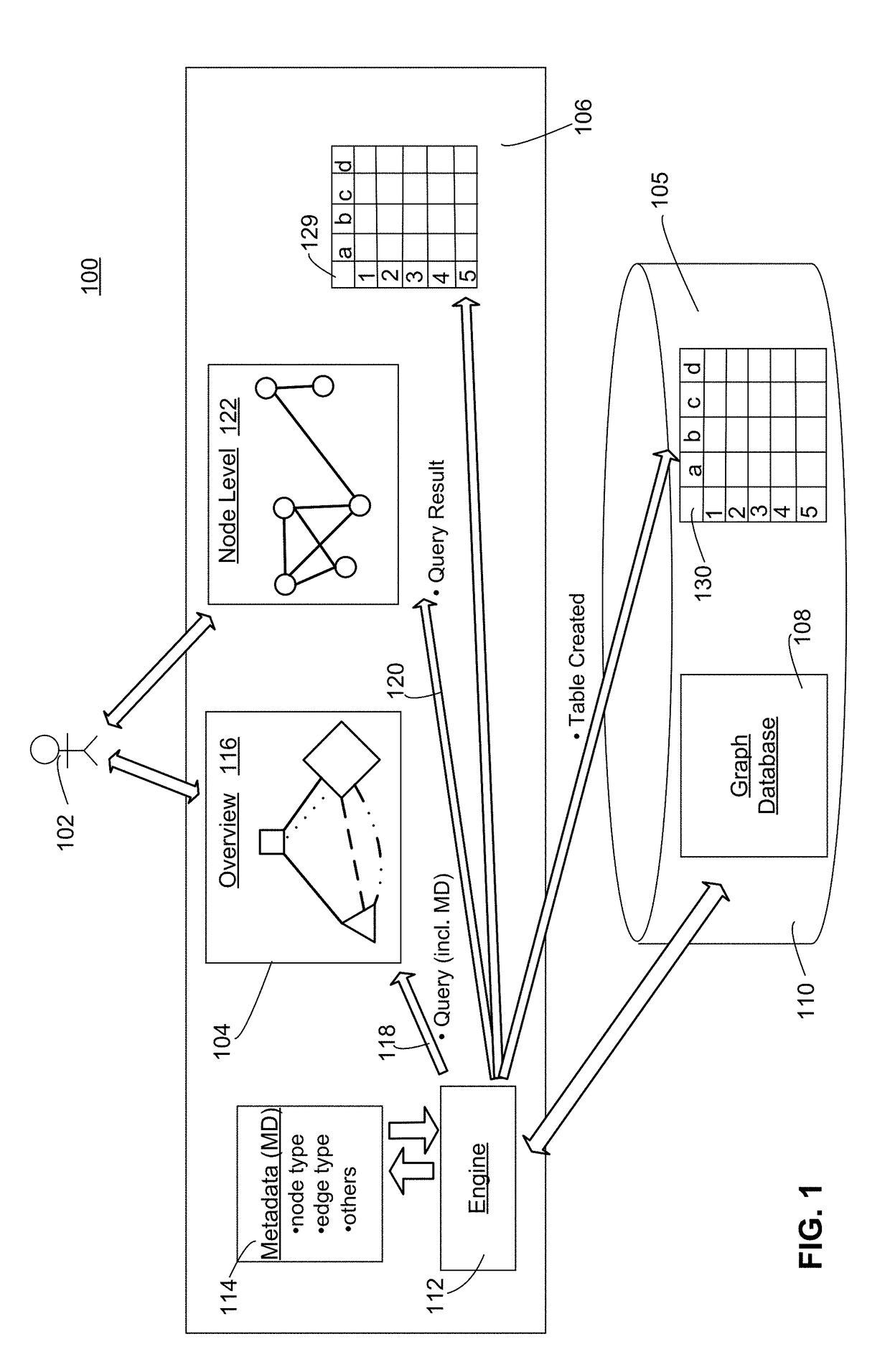Graph Database Visualization by Node and Edge Type
a graph database and edge type technology, applied in the field of visualizing and/or querying graph database data, can solve the problems of difficult to understand and navigate the visual representation of the database, and achieve the effect of simplifying the visualization and facilitating user interaction
- Summary
- Abstract
- Description
- Claims
- Application Information
AI Technical Summary
Benefits of technology
Problems solved by technology
Method used
Image
Examples
example
[0062]In this example, the graph data is stored in the NEO4J graph database available from Neo4j of San Mateo, California. Data from that graph database was acquired utilizing an extension of the LUMIRA desktop available from SAP SE of Walldorf, Germany, and then stored utilizing the SAP HANA in-memory database platform.
[0063]FIG. 3 provides a simplified diagram illustrating a generic view of an interface screen according to an example. In particular, an interface screen 300 may comprise a menu portion 302, a graph visualization portion 304, and a table visualization portion 306.
[0064]FIGS. 4A-M show various screenshots of interface screens in the example. In particular, FIG. 4A shows an initial overview interface page of social network graph data. This social network graph data includes the following three (3) node types:
[0065]Tweet;
[0066]Hashtag;
[0067]User.
[0068]The overview interface screen of FIG. 4A further shows the social network graph data as including the following five (5)...
PUM
 Login to View More
Login to View More Abstract
Description
Claims
Application Information
 Login to View More
Login to View More - R&D
- Intellectual Property
- Life Sciences
- Materials
- Tech Scout
- Unparalleled Data Quality
- Higher Quality Content
- 60% Fewer Hallucinations
Browse by: Latest US Patents, China's latest patents, Technical Efficacy Thesaurus, Application Domain, Technology Topic, Popular Technical Reports.
© 2025 PatSnap. All rights reserved.Legal|Privacy policy|Modern Slavery Act Transparency Statement|Sitemap|About US| Contact US: help@patsnap.com



